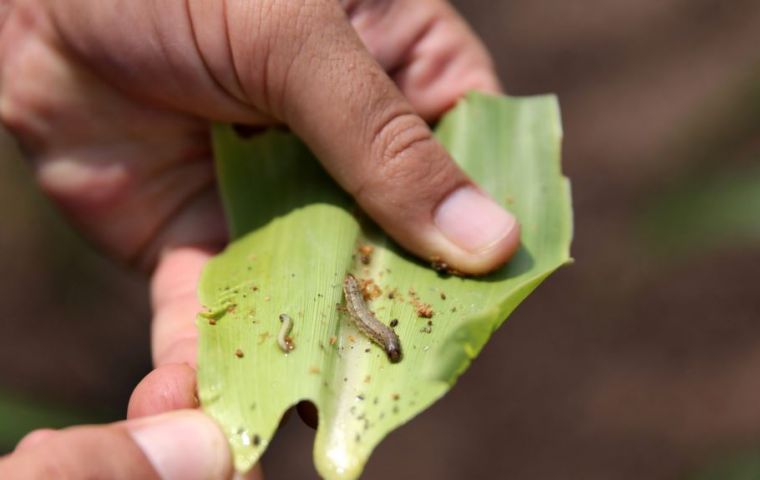MercoPress. South Atlantic News Agency
“Fall armyworms” have reached Asia and are munching crops; FAO meeting to address the challenge
 “Fall armyworms” are native to the Americas but they have been moving eastwards since 2016, sweeping across Africa, before arriving in Asia
“Fall armyworms” are native to the Americas but they have been moving eastwards since 2016, sweeping across Africa, before arriving in Asia Farming in several Asian countries is under threat from a type of crop-damaging insect that has munched its way from the Americas and across Africa, the United Nations' food agency said on Wednesday as global experts commence a three-day meeting to discuss ways to limit the damage.
“Fall armyworms” are native to the Americas but they have been moving eastwards since 2016, sweeping across Africa, where they caused US$1 billion to US$3 billion in damage, before arriving in Asia.
The flying insects arrived in India in July and have since spread to Sri Lanka, Bangladesh, Myanmar, Thailand and China's Yunnan province, according to the UN Food and Agriculture Organization (FAO).
They feed mostly on maize, for which China is the world's second-largest producer, and can feed on several species of crops, including rice and sugar cane - two of Thailand's main commodities.
An FAO meeting will take place in Bangkok from Wednesday to Friday, with officials from affected countries and experts discussing ways to limit armyworm infestations amid a “growing sense of alarm”.
“We need to work together because this is a pest that has no respect for international boundaries, threatens our food security, our economies, domestic and international trade,” said Mr Kundhavi Kadiresan, the FAO's assistant director-general and regional representative for Asia and the Pacific, in a statement.
The FAO said it is working with local authorities and training farmers to manage the pests by crushing egg masses and using biopesticides.
Chemical pesticides are an option but should be carefully considered due to environmental and health damage, it added.
In its native regions, from Argentina to northern Canada depending on the season, the bug's natural enemies --- predators, parasites and pathogens such as bacteria or viruses --- help keep it in check. But the new habitats may lack some of those defenses, the United Nations' Food and Agricultural Organization says. It's convening a conference in Bangkok this week to help share information and strategies on battling the pest.




Top Comments
Disclaimer & comment rulesCommenting for this story is now closed.
If you have a Facebook account, become a fan and comment on our Facebook Page!